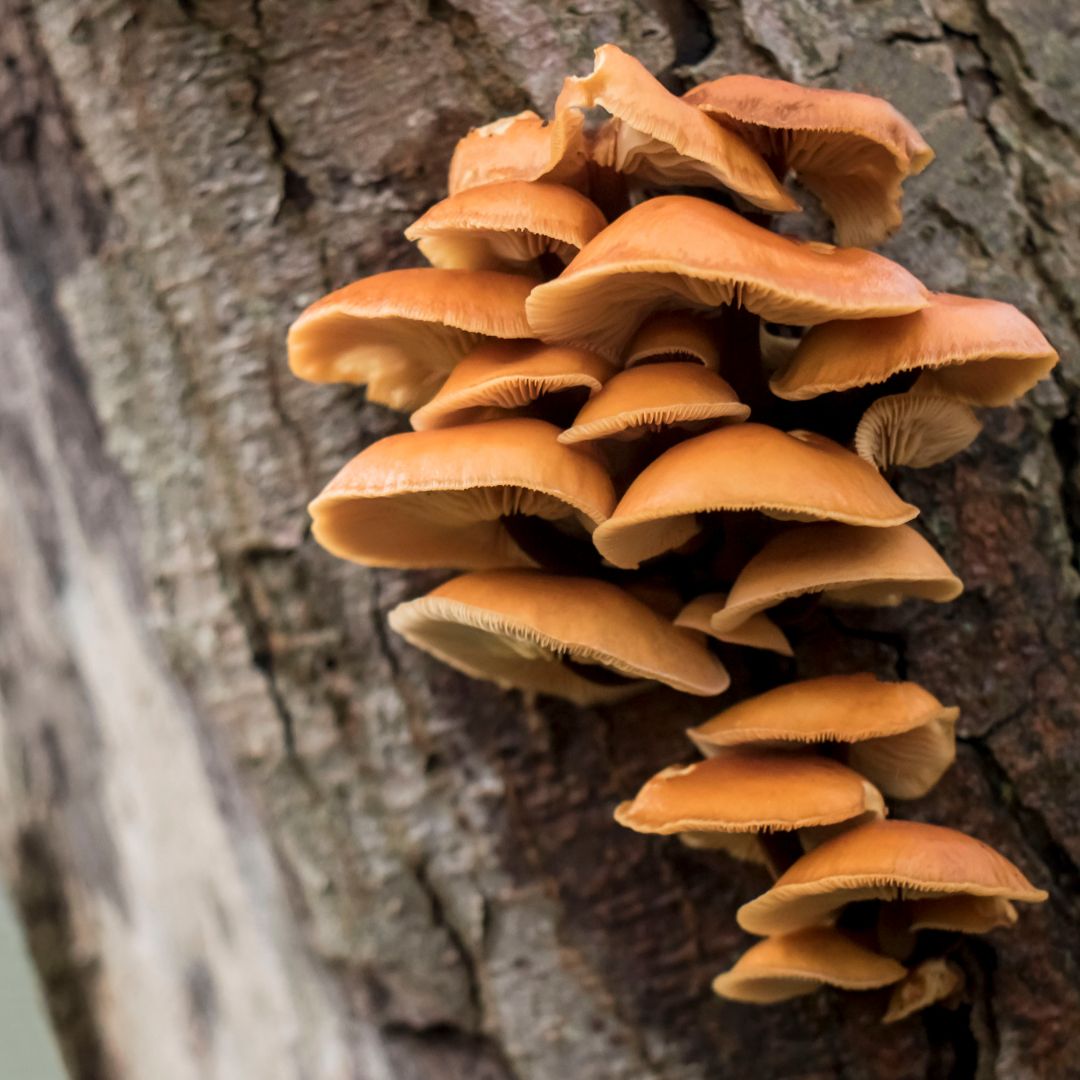”I have written plenty about the velvet shank (Flammulina velutipes) and Enokitake (Flammulina filiformis) often stating they are the same species. It is important to stay in top of new findings as recent studies show through DNA sequencing that they are distinct in the Flammulina genus where 81 collections took place and 12 distinct varieties were found. A new species, Flammulina finlandica, was also unexpectedly discovered in Northern Europe.
GeorgeFlavour Fred
Found on a tree stump in the Cotswolds I had found the Velvet Shank which are frost hardy so can freeze solid, de-frost and continue to grow. The orange/brown dense cap, slimey when wet, adnexed to sinuate gills (not crowded) start of white but as it ages they go pale yellow. The stipe (stem) goes from a pale yeally to dark brown/black with age and as the name suggests it has a smooth velvety feel. They look similar to the deadly Funeral Bell (Galerina marginata) which has a pale/yellow cap, pale to tan crowded gills, a skirt/ring around the stipe not found so commonly in winter (more summer & autumn).
https://www.researchgate.net/publication/325826280_Phylogeny_and_species_delimitation_of_Flammulina_taxonomic_status_of_winter_mushroom_in_East_Asia_and_a_new_European_species_identified_using_an_integrated_approach
Now we have cleared all that up I love the velvet shank and enokitake equally. The commercially grown enokitake is very important in many cuisines where you’ll see it fried, floating in ramens/broths or wrapped in seaweed/meat and bbq’d. the reason it looks so different is it is forced (like rhubarb) to become the long thin straight noodle looking cluster of mushrooms.


